Although Cantabria is only a small territory in the north of Spain, it has a sea, mountains and rivers, and this is of course reflected in the variety of products used in the local cuisine.
If you love FISH AND SEAFOOD, then Cantabria is the right destination for your taste buds and gourmet experiences.
I have to say, I don’t think I’ve ever eaten so many different types of fish in such a short period of time as during my trip to Cantabria. I can’t even name all of them – no wonder, I come from a landlocked country…

I experienced the most excellent tasting at the El Muelle Restaurant in the Botín Center in the capital city of Santander. Here, I also tasted traditional cuttlefish chops in its own black ink for the first time. The black dish looked interesting and when I finished eating, the plate looked like a modern painting – a few strokes of a brush dipped in black paint!


The “painted” plate could easily be exhibited in the local museum since Botín is a cultural center where interesting exhibitions are held and it is certainly not to be missed when visiting Santander.
The modern building designed by the famous Italian architect Renzo Piano in 2012 cannot be missed on the waterfront. The restaurant is on the ground floor; it is very pleasant and bright and you have a view of the Bay of Biscay, which is considered one of the most beautiful in the world. I just wish you better weather and not a rainy day like I had during my lunch at this restaurant.

I liked Pastel de Cabracho the most – a pudding made of red scorpionfish.

Overall, I was delighted with the selection of dishes, their careful elaboration and smart arrangement.
Address: Muelle de Albareda, P.º de Pereda, Santander
Website: https://www.centrobotin.org/en/cafe-centro-botin/
If you want to get to know the capital of Cantabria better, here are some tips on what to see: 9 Tips for a Perfect Day in Santander
One of the typical seafood dishes in Cantabria are RABAS – fried squid cut into rings, served with lemon. They are especially tasty because they are made from fresh squid that still retains the natural taste of seawater.

I ordered rabas at the beautiful town of Comillas, which was once just a fishing village, but later the royal family and high nobility came here to spend the long summer months. You can read more about it in my article: Comillas
The restaurant Parrilla El Galeón De Rubárcena is located at the end of town and it was visited by many locals which immediately convinced me that they must cook well there.
Address: El Galeón de Rubárcena, Bº de Rubárcena, Comillas
Website: http://www.restaurantesdecomillas.com/
In the town of Comillas, I also tasted the excellent ABBA salad – named after the hotel which is mainly sought after by golf lovers. The salad was made of shrimp and crab meat and you can easily prepare it at home by adding tomatoes, grated carrots, potatoes and mayonnaise. However, the taste of fresh sea ingredients is much better.

We could go on listing fish dishes for a long time, but I definitely have to mention ANCHOVES – small, salted fish with an intense taste. Cantabria is the largest producer of canned anchovies in Spain, products from the city of Santoña are among the most popular. They were excellent in a salad with tomatoes, cheese and melon.

Of course, you can also order a fresh tuna steak in Cantabria…

…but salmon and trout from the local rivers are popular as well. Every year at the beginning of the salmon season, the El Campanu competition is announced. It’s about who will be the lucky one to catch the first salmon. El Campanu means “the bell” because, according to tradition, bells were rung in monasteries on that occasion. Today, the first salmon caught is being auctioned. It is usually bought by a restaurant (in 2021 for €1,500), which then organizes an event inviting politicians, football players and other famous personalities. There is a lot of media interest in it, the restaurant gains publicity and the lucky fisherman will receive the money from the auction.
If you don’t order fish, at least go and have a look at the fish market in Mercado de la Esperanza in Santander. You will surely be surprised by the amount of fish, octopus, mussels, lobsters, crabs and other fish and seafood.
 MEAT – mainly veal and beef are popular, Cantabria also hosts the largest livestock fair in Spain. After so many fish dishes, a proper steak will definitely go well…
MEAT – mainly veal and beef are popular, Cantabria also hosts the largest livestock fair in Spain. After so many fish dishes, a proper steak will definitely go well…

Pork is one of the main ingredients for the so-called mountain stew – COCIDO MONTAÑÉS. Other ingredients are alubias (white beans), berza (cabbage), morcilla (black pudding), tocino (bacon) and pork sausage chorizo. It is quite a heavy dish, albeit very tasty. It has its origin in the 17th century when it was cooked in the Cantabrian mountains (hence the name), where cold and wet weather prevails. I tasted this dish at the La Portilla Restaurant in Celis.
Address: Restaurante La Portilla, Carretera General, Celis


The Liébana region has its own version of this dish, offered under the name COCIDO LEBANIEGO. It is cooked for 4-5 hours. Local chickpeas (garbanzos), cabbage, morcilla, tocino, costilla (rib) and chorizo are added to the stew. Beef and a filling made of bread flour, egg, chorizo and parsley can be added as well. The best chickpeas are from around Potes – if you visit this charming city, this dish is a must! I definitely recommend the El Cenador del Capitán Restaurant (in the building next to the symbol of this city – the Torre del Infantato tower).

While you are waiting for your food, you can explore a lot of things hanging everywhere on the walls, or better: you can enjoy the view through the window and observe the happenings on the street and by the river. The view is a bonus to the food.
Address: El Cenador del Capitán, C. Cervantes 3, Potes
Website: http://www.elcenadordelcapitan.com/en/

First, they served us the broth from this traditional dish as a soup – sopa de cocido.
Then a plate full of all the aforementioned ingredients landed on the table. The food was delicious, but the portion was huge, I couldn’t eat it all. And I had to leave room in my stomach for dessert, too…


If you just want to have a quick meal or chat with friends over a glass of wine in the evening, then PINCHOS – small sandwiches “spiked” with a skewer or toothpick (the name is derived from the word pinchar – to skewer) are the right choice. How many people, so many tastes, how many tastes, so many pinchos… They can be simple or sophisticated, vegetarian, but also with a piece of ham, chorizo or fish… You can find a large selection in Santander at the Eastern Market (Mercado del Este), but also in any bar, tavern or as part of hotel buffet breakfasts.


SWEET PASTRY:
CORBATAS – cake made from puff pastry, the shape of which resembles a tie or a bow tie, which gave it its name corbata (tie).

Each region adds its own adjective to the word corbata. If you come to the port town of San Vicente de la Barquera, go to Casa de las Corbatas de Unquera – they have a great selection.
QUESADA PASIEGA – a cake made of butter, sugar, milk, eggs and ricotta or cottage cheese, flavored with cinnamon and lemon zest. The consistency resembles a very thick pudding. It is served cold or warm.

SOBAO PASIEGO – sponge cake, flavored with lemon zest, but anise liqueur or rum can also be added.
Whether you come to Cantabria as a pilgrim or a tourist, be sure to visit Santillana del Mar, a picturesque town with medieval charm. Here, we stopped by the house Casa Quevedo, where they offer breakfast like a grandmother’s – a piece of cake and a glass of milk (in Cantabria, the milk is of very high quality, you can meet grazing cows in several places, and in the past, they used to walk freely on the streets of Santillana). There is also a small museum in the store with various milk containers and milking tools. The dairy was founded by Señora Maria Luisa in 1950, who collected all the glasses from her kitchen and started offering fresh milk. The beginnings were difficult, the neighbors even mocked her, but she did not give up and milk is now sold there to this day. I chose sobao with a glass of milk.

DESSERTS:
NATILLAS – pudding made of milk and eggs (which I ate at the ABBA hotel as well). Milk is heated with vanilla and cinnamon. Eggs, sugar and cornstarch are then added to the cooled milk. This dessert is served cold or warm, sprinkled with cinnamon.

The Cantabrian cream CREMA CANTABRA is similar – also a pudding made of milk, cornstarch and eggs, but baked in the oven. After cooling, the dessert is sprinkled with sugar and burnt to create a crispy caramel top layer. My photo is from the aforementioned restaurant in Celis.

However, one of the greatest culinary delights for me was the CANÓNIGO dessert at the El Cenador del Capitán restaurant. It resembles the floating islands dessert, but on a higher, sophisticated level – the meringue is denser and flavored with caramel. Yum! Now you understand why I didn’t eat the whole cocido…

What is definitely still to be tasted in Cantabria is the famous local blue CHEESE – PICÓN BEJES-TRESVISO. Most importantly, you should visit not only a cheese manufactory (queseria) but also a cave where these cheeses mature.

The cheese is made from cow’s or sheep’s milk and has a sharp, spicy taste that combines everything the cheese has absorbed during its several months of ripening. You can find detailed information about the cheese, the production and the cave that I had the opportunity to visit in my article: Caves where cheese matures

DRINKS:
In Cantabria, you can find quality WINES, the vineyards are mainly in the Liébana region.

The most traditional drink is ORUJO – a strong liqueur that is made from pomace (solid remains during wine production – skins, seeds and stalks). Orujo was produced in monasteries in Liébana already during the Middle Ages. Every year in November, the Fiesta del Orujo festival takes place in Potes, the capital of this region. At the El Cenador del Capitán restaurant, they will bring you orujo, tea in a teapot and a clay mug without a handle. Even though I tried to mix liquor with tea, it was too strong of a drink for me – 47% alcohol!

FINAL TIP:
Do you often have a problem with which souvenirs to bring from the visited country? How about buying something to eat or taste? I bought canned anchovies and puddings from red scorpionfish and lobster (made in Santoña) in a small shop in Comillas.

This way you can prepare a small tasting for family or friends and tell them about your experiences from your travelling.
BON APPETITE! – BUEN PROVECHO!

Text: © Copyright Ingrid, Travelpotpourri
Fotos: © Copyright Ingrid, Travelpotpourri

 TRAVEL
TRAVEL











 RECIPES WITH A STORY
RECIPES WITH A STORY
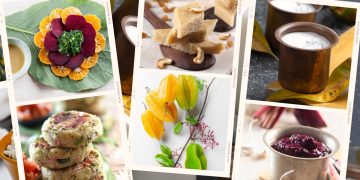










 AUSTRIA-VIENNA
AUSTRIA-VIENNA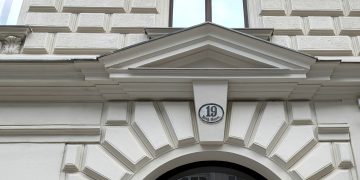









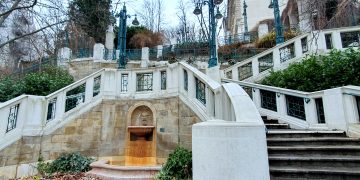

 SLOVAKIA-BRATISLAVA
SLOVAKIA-BRATISLAVA







 EVENTS
EVENTS




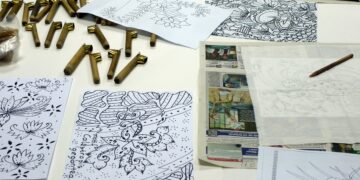


 INTERVIEWS
INTERVIEWS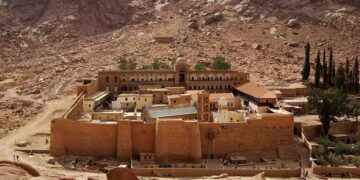







 Camino Lebaniego – A Picturesque Pilgrimage Way in Cantabria
Camino Lebaniego – A Picturesque Pilgrimage Way in Cantabria The Most Beautiful Staircase – Interesting Bits about Vienna 15
The Most Beautiful Staircase – Interesting Bits about Vienna 15



